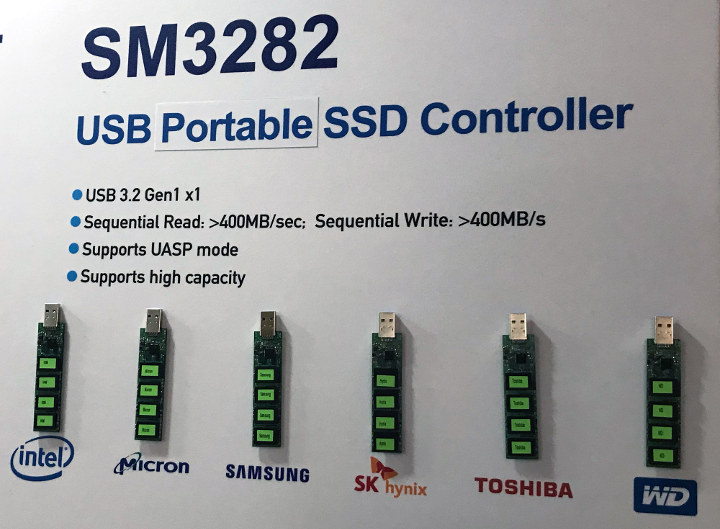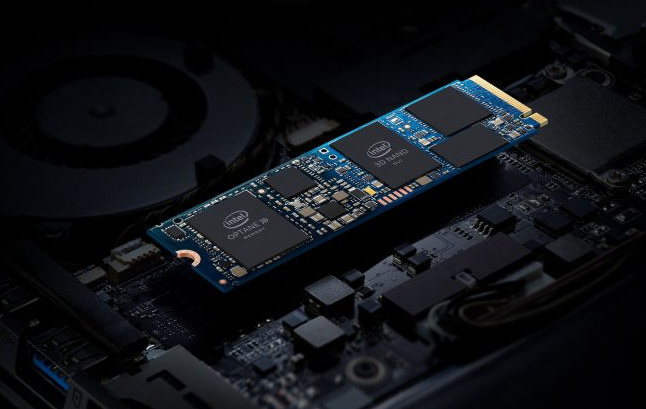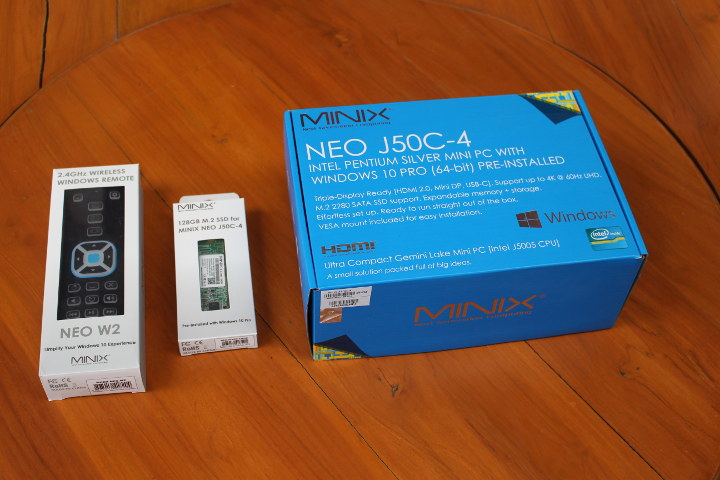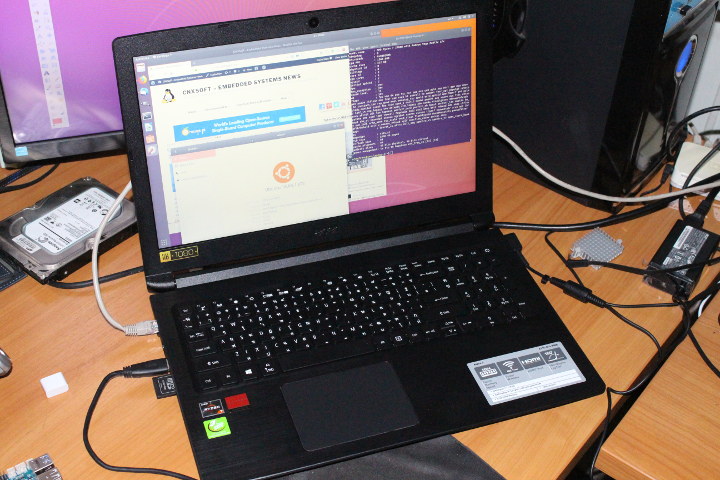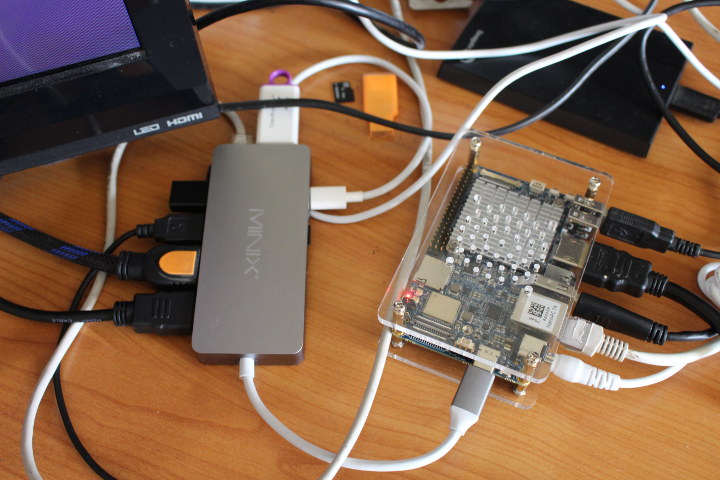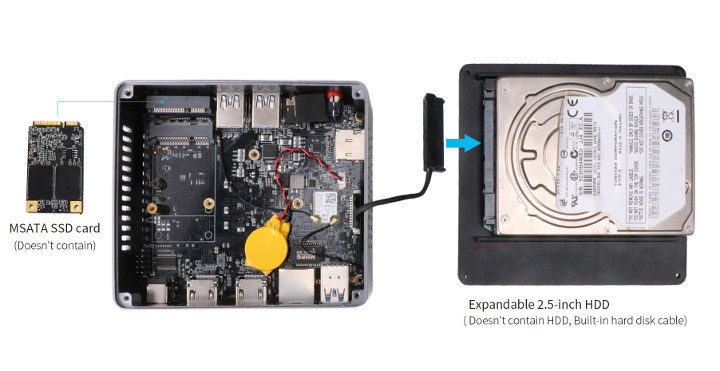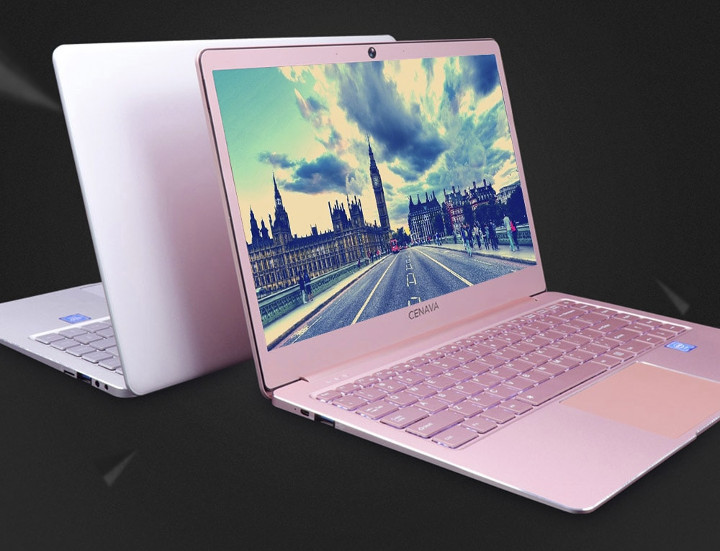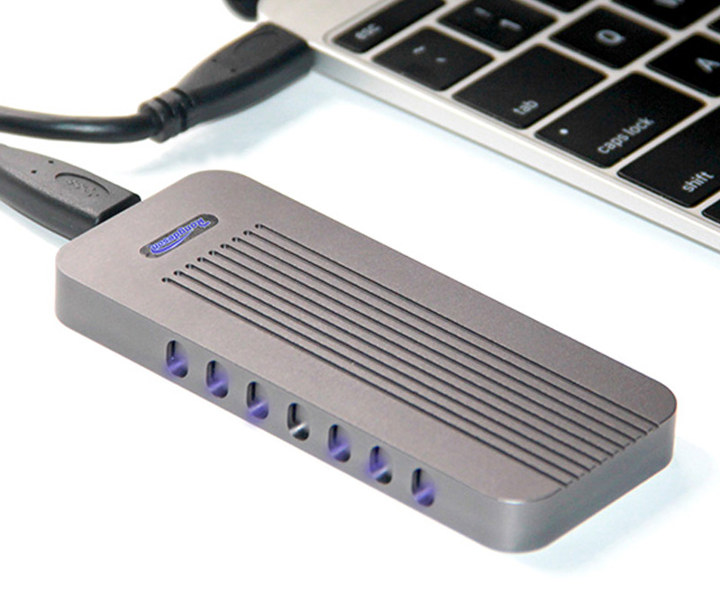Portable USB SSD drives are nothing new, but they are usually implemented using a stand-alone SSD with its own SSD controller combined with a USB to SATA or PCIe bridge chip in order to interface the SSD drive with the host computer or board. Silicon Motion has recently unveiled SM3282 SSD controller that also comes with an on-chip USB 3.2 Gen 1 interface providing a complete single-chip hardware and software solution for portable USB SSD sticks. This should enable smaller and cheaper USB SSD drives. Some of the key features of the SM3282 controller include: Peak sequential read and write transfer speeds of over 400MB/sec Supports USB 3.2 Gen 1 type A and type C Crystal-less design for bill-of-materials cost savings Built-in 3.3V/2.5V/1.8V/1.2V voltage regulators Supports LED for indicating access status 68-pin QFN package Compatible with Windows 10, Mac OS 10.x and Linux kernel v2.4 and greater The chip also […]
Intel Optane memory H10 M.2 Card Combines Optane Memory with QLC NAND Flash
Nearly exactly two years ago, Intel announced the first commercial Optane memory M.2 cards that provide excellent random read/write performance, and can greatly boost boot times and app loading times. That means you need to insert an extra card in your system, and for compact laptops, or mini PCs the extra socket is simply not there due to lack of space. To solve this issue, Intel has just announced Optane Memory H10 M.2 card that combines Optane Memory high IOPS with the lower cost and higher capacity associated with QLC NAND flash since it combines both technologies into a single card. In the press release, Intel explains 8th Generation Intel Core U-series mobile platforms featuring Intel Optane memory H10 will become available through OEMs this quarter, and provide the following benefits:everyday users will be able to: Launch documents up to 2 times faster while multitasking. Launch games 60% faster while […]
MINIX NEO J50C-4 Pentium J5005 Mini PC Review – Part 1: Unboxing, Windows Remote, M.2 SSD, and Teardown
MINIX has just announced a new Windows 10 Pro mini PC with MINIX NEO J50C-4 mini PC that just looks like their previous models like MINIX NEO N42C-4, except it comes with a Pentium Silver J5005 “Gemini Lake” processor. The company sent me a sample together with some accessories, and it will be interesting to see how it performs. But before I’ll go through the specifications, checking the devices and some extra accessories namely NEO W2 windows remote control, and an M.2 SSD pre-loaded with Windows 10 Pro. Finally, I’ll have a look at the internals in the first part of this review. MINIX NEO J50C-4 Specifications SoC – Intel Pentium Silver J5005 quad core “Gemini Lake” processor @ 1.50 / 2.80 GHz with 18 EU Intel UHD Graphics 605 (10W TDP) System Memory – 4GB DDR4 upgradable to 16GB via 2x SO-DIMM slots Storage – 32GB eMMC 5.1 flash, […]
Acer Aspire 3 A315-41G (AMD Ryzen 7 2700U) Laptop – Installing Ubuntu 18.04 and “Hidden” M.2 SSD Socket
Everyday I’m using a tower PC running Ubuntu 18.04 to take care of this blog, but when I travel it’s obviously not so convenient, so a few years ago I bought an Acer Aspire E5-421G laptop powered by an AMD A4-6210 processor with 4GB RAM, 512GB HDD, and a 14″ display. I installed Ubuntu on the laptop and it works, but with 4GB RAM, it’s not always usable while multitasking. For example I can run Thunderbird and Firefox, but if I ever make a Skype call for example, the system becomes unusable, and I have to close one of the programs. Tasks like video editing are also quite slow on the machine. So since I’m going to travel in a few weeks, I decided I needed a new laptop. My requirements were 8GB RAM, SSD and HDD support, a 15″ display, the ability to run Ubuntu 18.04, and possibly a […]
A Quick Look at MINIX NEO C Plus USB-C Adapter, and Windows 10 M.2 SSD Card for N42C-4 Mini PC
A couple of weeks ago, MINIX announced their NEO C Plus USB type C adapter with 9 ports including two HDMI outputs. The company has now sent me samples of the adapter, as well as an M.2 SSD for MINIX NEO N42C-4 pre-loaded with Windows 10 Pro. I’ll first have a look at the accessories I received before testing MINIX NEO C Plus adapter with Android 7.1 running on NanoPC-T4 board. MINIX NEO C Plus and M.2 SSD Unboxing I received two USB-C multiport adapter with dual HDMI output which are identical, except for the color with one white version and a silver version, as well as a “128GB M.2 SSD for MINIX NEO N42C-4”. The USB-C adapter comes with a bilingual English-German user manual. We learn some interesting information and limitations from the device. First, the adapter is only certified to use with MacBook and MacBook Pro laptops, and […]
Beelink X45 Basic/Premium NUC Clone Launched for $220 and Up
Last week, we started to read about Beelink X series mini PCs powered by Gemini Lake processors, and with a design similar to Intel NUC mini PCs. Three models will be available at first with Beelink X45 Basic/Premium based on Intel Celeron J4105 processor with respectively 4GB/64GB and 6GB/128GB RAM/storage configurations, and Beelink X55 with a more powerful Intel Pentium Silver J5005 processor, 8GB RAM, and a 128GB SSD. The Beelink X45 models have now showed up on GearBest with pricing starting at $219.99 shipped, but you can bring that down to just under $200 with GBmidyear2018 coupon. Beelink X45 Premium model sells for $259.99 before applying any coupon. [Update: Banggood lists Beelink X45 for $172.99 shipped] Beelink X45 Standard/Premium specifications: SoC – Intel Celeron J4105 quad core Gemini Lake processor clocked @ 1.50 GHz / 2.50 GHz (Turbo) with Intel UHD Graphics 600; 10W TDP System Memory / Storage […]
Cenava P14 Apollo Lake Laptop Comes with a 512GB SSD
Most Intel Apollo Lake laptops come with just 32 or 64GB SSD or eMMC flash storage, and if you need much more storage we previously covered DERE A3 Air laptop with an Intel J3455 processor, 64GB eMMC flash, and a 512GB hard drive. But if you don’t need any mechanical storage in your laptop, while still wanting more capacity, Cenava P14 laptop comes with a large 512GB SSD, 6GB RAM, and a 14″ display. Cenava Ultrabook P14 specifications: SoC – Intel Celeron N3450 quad core Apollo Lake processor @ 1.10 GHz / 2.20 GHz (Turbo) and 12 EU Intel HD graphics 500; 6W TDP System Memory – 6 GB DDR3 RAM Storage – 512 GB M.2 SATA SSD flash, micro SD card slot up to 128 GB Display – 14.1″ IPS display with 1920 x 1080 resolution Video Output – micro HDMI port Audio – micro HDMI, 3.5mm audio jack, […]
LM-902 USB3.1 Gen2 to NVMe PCIe M.2 SSD Enclosure Sells for $43
Yesterday, I wrote about ASMedia ASM2362 USB 3.1 Gen2 to PCIe NVMe SSD chip that will allow for connecting NVMe SSD into (largish) USB stick enclosures delivering up to 10 Gbps raw throughput. The post generated several comments including that JMicron Technology was also showcasing their own solution at Computex 2018 with JMS583 USB 3.1 Gen 2 to NVMe PCIe Gen3 bridge controller, and that enclosures were already for sale in China. If it is for sale in China, it should also be for sale on Aliexpress, or at least on Taobao. Bingo! LM-902 “USB 3.1 to PCI-e SSD NVMe” enclosure offers just that for $42.93 including shipping on Aliexpress. Listed features and specifications: Storage I/F – NVMe M.2 M-key socket with PCIe 3.1a USB – USB 3.1 Gen2 type C up to 10 Gbps Features Supports TRIM to the SSD USB Type-C multiplexer& configuration channel(CC) logic NVM Express 1.3 USB […]


